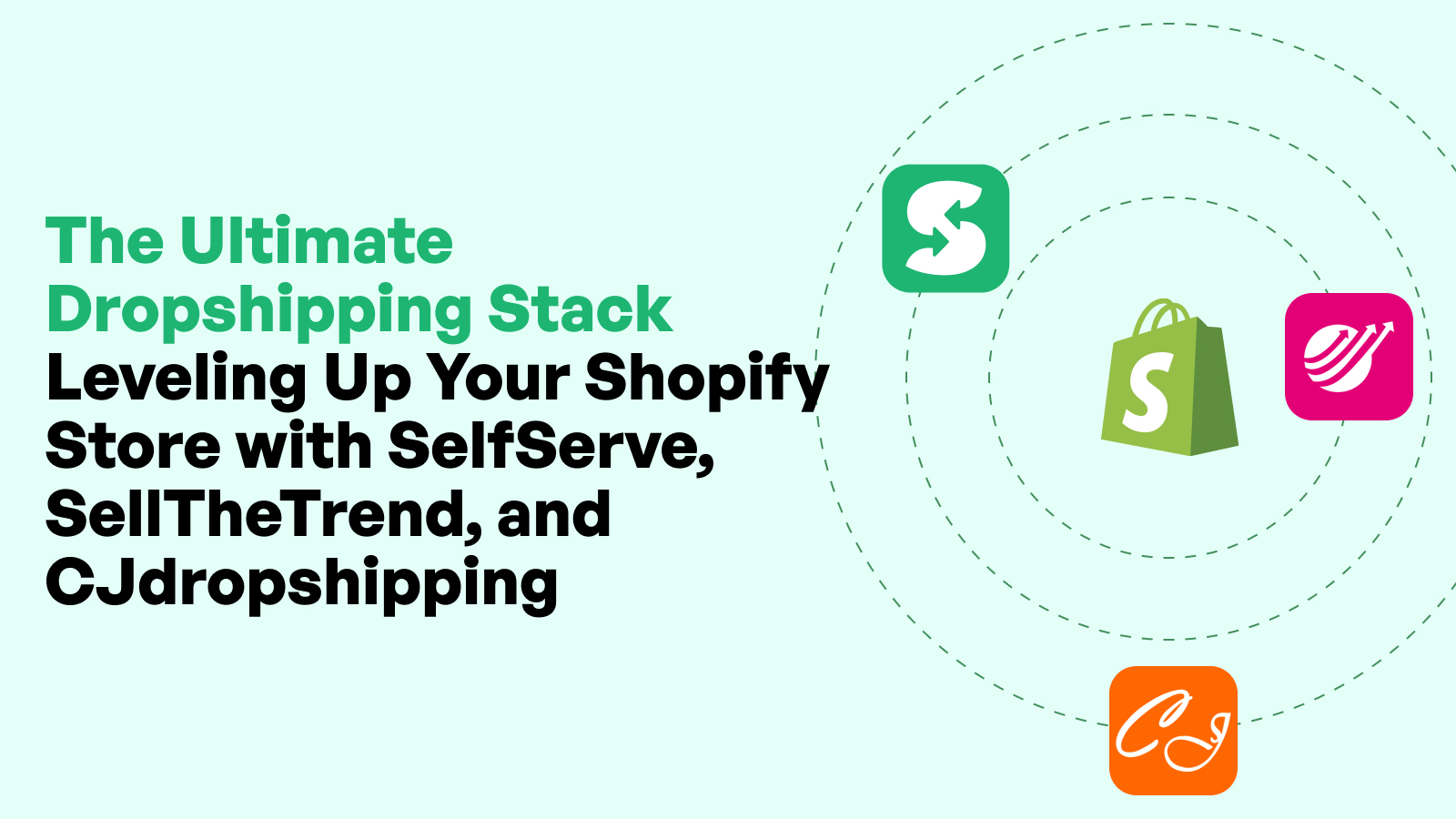How to Use Social Proof to Drive More Sales on Shopify

Defining Social Proof in E-commerce Context
In the digital commerce space, social proof refers to the psychological phenomenon where people mirror the actions of others under the assumption that those actions reflect correct behavior. For Shopify merchants, this means leveraging customer feedback, endorsements, and real-time behavioral signals to influence purchasing decisions. Social proof can appear in various formats—product reviews, testimonials, user-generated content, influencer partnerships, and even notifications of recent purchases. These indicators help build trust and reduce friction for first-time or hesitant buyers.
The Psychological Basis for Social Proof
Human behavior is often driven by the decisions and validations of others. From a psychological standpoint, people look to social cues when they're uncertain—especially in a buying situation. This is rooted in cognitive biases like herd behavior, conformity, and authority recognition. When a shopper sees that others are happy with a product or service, their confidence in the decision increases. For Shopify merchants, social proof acts as a conversion lever, easing doubts and pushing hesitant customers toward checkout.
Why Social Proof Matters for Shopify Merchants
In a competitive e-commerce ecosystem, trust and credibility are everything. With countless options available, shoppers gravitate toward stores that appear reputable and well-liked by others. Social proof offers Shopify merchants a powerful, low-cost way to enhance brand authority and influence buyer psychology. When implemented effectively, it not only boosts conversion rates but also elevates customer retention, brand perception, and overall average order value.
Types of Social Proof That Convert
Customer Reviews and Ratings
For Shopify merchants, customer reviews are one of the most direct and effective forms of social proof. They provide authentic insights into the user experience and product performance, addressing concerns that prospective buyers may have. Verified buyer feedback adds legitimacy and removes skepticism, particularly for first-time customers who have no prior interaction with your brand. Displaying star ratings, review counts, and specific feedback on product pages can significantly enhance user confidence and increase conversions.
While positive reviews are the ideal, even negative reviews play a constructive role. When handled transparently and professionally, they showcase your brand’s accountability and responsiveness. Replying to concerns or offering follow-ups demonstrates that the merchant values customer feedback—an important trust signal for new visitors.
User-Generated Content (UGC)
User-generated content adds visual and experiential authenticity to your product pages. Whether it’s photos, unboxing videos, or social media shoutouts, UGC resonates deeply with shoppers. Shopify merchants who curate and prominently display this content on their site and product listings tend to see longer time-on-site metrics and higher conversion rates. UGC also serves as a cost-effective content strategy, extending the value of customer engagement across multiple platforms.
Encouraging UGC involves inviting customers to tag your brand on platforms like Instagram or TikTok. Running incentives like giveaways or featured customer sections on your homepage can increase participation. What matters most is authenticity—content that looks too polished or scripted can lose its social proof impact.
Influencer and Celebrity Endorsements
Influencer marketing remains a vital form of social proof for Shopify merchants, especially those targeting specific demographics or niches. Influencers lend their authority and audience trust to your brand, effectively pre-validating your offerings. There’s an important distinction between macro-influencers with massive reach and micro-influencers with niche, engaged audiences. The latter often deliver better ROI and deeper connections.
Legal and ethical transparency is essential here. Shopify merchants must ensure that paid partnerships are disclosed per FTC guidelines. Authenticity matters more than ever—customers can easily detect inauthentic endorsements, which can backfire and damage trust.
Media Mentions and Press Features
Third-party validation from respected media outlets or industry blogs acts as a powerful credibility booster. Shopify merchants featured in local news, niche publications, or e-commerce roundups should highlight these mentions through press badges or dedicated sections on their websites. Media validation signals to visitors that your store is trusted beyond your own marketing, lending weight to your brand’s claims.
Including press logos on your homepage or product pages helps reinforce trust visually. However, ensure these mentions are legitimate and current—outdated or irrelevant features can dilute impact rather than enhance it.
Real-Time Activity Notifications
Displaying real-time pop-ups such as "Jane from New York just bought this" or "12 people are viewing this product" introduces urgency and community validation. These subtle nudges mimic in-store crowd behavior, prompting users to act quickly or validate their interest. Shopify merchants often deploy tools that integrate such live notifications into product and cart pages.
It’s critical, however, to use these responsibly. Overuse or inaccuracy can annoy visitors and harm credibility. Real-time social proof should feel informative, not intrusive, and be supported by actual customer behavior data.
Strategic Placement of Social Proof on Shopify Stores
Homepage: First Impressions that Build Trust
Your homepage sets the tone for your entire Shopify store. Featuring key social proof elements—like recent reviews, best-selling products, or a carousel of Instagram testimonials—helps establish instant trust with new visitors. The homepage is also a prime location for press logos or influencer quotes, subtly nudging the visitor to explore further. For Shopify merchants, this early validation is crucial to reducing bounce rates and extending site engagement.
Product Pages: Reinforcing Confidence at the Decision Point
Social proof at the product level directly influences buyer confidence. Customer reviews, star ratings, and user-submitted photos build authenticity, especially when placed near the "Add to Cart" button. Shopify merchants should aim to include enough feedback to paint a clear picture without overwhelming the shopper. Enhanced product pages with social proof increase time-on-page and decrease cart abandonment.
Cart and Checkout: Reducing Purchase Anxiety
At this critical stage, trust signals can significantly reduce hesitation. Featuring short testimonials like "Over 10,000 happy customers" or a trust badge mentioning verified reviews near the checkout button can boost completion rates. Shopify merchants can also incorporate real-time purchase notifications or mini customer highlights as gentle nudges.
Post-Purchase Pages: Encouraging Further Engagement
The opportunity for social proof doesn’t end at checkout. Post-purchase confirmation pages are a great place to prompt review submissions, UGC uploads, or referral sharing. Shopify merchants can incentivize engagement by offering loyalty points or discounts on future orders. This not only enhances social proof but encourages repeat purchases.
Designing Effective Social Proof Elements
Copywriting Best Practices for Reviews and Testimonials
Effective social proof isn’t just about what’s shown—it’s about how it’s written. Concise, emotionally resonant testimonials work best. Avoid generic phrases like "Great product!" and instead highlight reviews that mention specific use cases, benefits, or results. Shopify merchants should prioritize testimonials that reflect their target customer’s voice.
Including the customer’s name, location, or photo adds legitimacy. Avoid overly edited testimonials as they can come off as staged. Where possible, let your customer speak in their natural tone. Authenticity and clarity should drive your copy decisions.
Visual Design Tips for Display Widgets
Social proof needs to be not only informative but visually harmonious with your Shopify store design. Match your brand’s typography and color palette while ensuring clear readability. Display elements such as star ratings or UGC sliders should be easy to navigate and non-intrusive.
Balance is key. Too many elements clutter the experience, while too few may lack impact. Shopify merchants should test various layouts and ensure they perform well on desktop and mobile. Embedding social proof in collapsible tabs or sliders can help maintain design cleanliness.
Mobile Responsiveness and Page Speed Considerations
With mobile commerce continuing to rise, social proof elements must load quickly and render perfectly on all screen sizes. Heavy UGC media or third-party widgets can drag down performance. Shopify merchants must regularly audit these assets and consider lazy loading or compression tools to maintain speed.
Prioritize social proof that’s vertically aligned, easy to swipe, and optimized for tap-based interactions. Mobile-first design principles should always guide your implementation strategy.
Timing and Personalization
When to Show Which Type of Social Proof
Timing is everything in e-commerce, and this holds true for social proof. Shopify merchants must be strategic about when specific types of social proof are shown. For example, reviews are best placed near the decision point, such as on product pages. Real-time activity pop-ups perform better when they don’t interrupt the shopping flow but subtly complement it.
Cart abandonment scenarios may benefit from retargeting ads or emails featuring testimonials or popular items. Meanwhile, homepage banners can showcase customer praise or star ratings to establish trust immediately upon landing. Personalizing based on stage in the customer journey ensures relevance.
Personalizing Testimonials and Reviews Based on User Behavior
Advanced personalization increases the relevance of social proof. Shopify merchants can segment testimonials and UGC based on browsing history or past purchase data. For instance, a returning customer may be shown reviews from other repeat buyers, reinforcing loyalty. A new visitor might see beginner-friendly product endorsements.
Dynamic content tools allow merchants to swap out testimonials based on user tags, geo-location, or referral source. This level of tailoring makes social proof feel intentional rather than generic, increasing its persuasive power.
Dynamic Content Blocks for Returning Visitors
Returning visitors often need a different kind of nudge than first-timers. Shopify merchants can deploy dynamic blocks that recognize return behavior and reinforce social proof through updated stats or timely reviews. A customer who left a product in the cart may be reminded that 500 people bought it since their last visit.
This creates a sense of momentum and progress, gently guiding users back into the purchase funnel. The goal is to make social proof feel timely and specific, not static or repetitive.
Collecting High-Impact Social Proof
Creating Feedback Loops at Checkout and Post-Purchase
The checkout and post-purchase moments are the highest-leverage touchpoints for collecting fresh, high-quality social proof. Shopify merchants should prompt buyers to leave a review or share a photo immediately after purchase, while the experience is still top-of-mind. Even simple review widgets or thank-you emails can yield strong results.
Incentivization strategies like loyalty points or small discounts on future orders can increase response rates. However, it’s important to ensure that incentives don’t compromise authenticity. Transparency about why reviews are requested helps build long-term trust.
Encouraging UGC Through Campaigns and Giveaways
Running structured campaigns around user-generated content is another proven tactic. For instance, a monthly giveaway for the best product photo or testimonial can stimulate sharing. Shopify merchants should create clear, easy-to-follow participation instructions and feature selected entries prominently on the site.
The goal is not just to acquire content but to foster a community around your brand. UGC that reflects diverse customer use cases and demographics will resonate more broadly and serve as enduring, relatable social proof.
Tools and Widgets for Streamlined Review Collection
While no third-party tools will be named per guidelines, Shopify’s native features allow integration of review and UGC request systems. Automated emails, review widgets, and custom thank-you pages make the collection process seamless. Consistency in asking and showcasing user feedback is what drives volume over time.
Merchants should monitor conversion rates from review request emails and test different timing windows to maximize submissions.
A/B Testing and Performance Optimization
Designing Controlled Experiments with Social Proof
Shopify merchants can’t improve what they don’t measure. A/B testing is crucial to understanding which social proof elements actually drive conversions. Create controlled experiments by varying the presence, placement, or wording of reviews, testimonials, or pop-ups. Run tests long enough to collect statistically significant results before drawing conclusions.
Even subtle differences in layout or copy can have measurable effects. For example, comparing testimonial carousels vs. static quotes may yield insights into user preferences. Data-backed experimentation turns social proof from guesswork into strategy.
Analyzing Engagement and Conversion Metrics
Once tests are running, track engagement metrics like click-through rate (CTR), time-on-page, and bounce rate. More importantly, focus on conversion-specific KPIs: add-to-cart rate, checkout completion rate, and revenue per visitor. Shopify merchants can use this data to refine not only the look and feel of social proof elements but also their messaging and timing.
Heatmaps and scroll-depth analysis also offer visual clues about how users interact with social proof. If testimonials are buried too low, they might go unseen. Performance data ensures your best trust assets don’t go to waste.
Pitfalls to Avoid When Using Social Proof
Overuse or Cluttered Presentation
While social proof is a powerful tool, too much of it can overwhelm or distract. Shopify merchants should resist the urge to plaster reviews or pop-ups across every page. Clarity and focus are vital. When elements compete for attention, none of them win.
Focus instead on high-quality, relevant, and well-timed social proof. Each element should serve a clear purpose in the buyer journey. Consider the hierarchy of information and prioritize the customer experience over raw quantity.
Fake or Misleading Testimonials
Nothing erodes trust faster than inauthenticity. Shopify merchants must ensure that all social proof is genuine, verifiable, and transparently presented. Never fabricate testimonials or borrow reviews from other sources. Not only is this unethical, but it can also violate platform policies and legal standards.
Always disclose when reviews are incentivized and avoid editing for tone or grammar unless approved by the customer. Trust is hard-won and easily lost—authenticity must be the foundation of your strategy.
Ignoring Negative Feedback or Failing to Respond
Negative reviews can be a goldmine for improvement and credibility—if handled well. Shopify merchants should never delete unfavorable feedback unless it violates clear policies. Instead, respond with empathy, offer solutions, and showcase your commitment to customer care.
Publicly addressing criticism can turn a detractor into a loyalist and shows potential buyers that your brand stands behind its products.
Using Social Proof in Marketing Campaigns
Retargeting Ads Featuring Testimonials or Reviews
Social proof doesn’t need to live only on your website. Shopify merchants can amplify its impact through retargeting campaigns. Ads that feature a product alongside a glowing review or user quote serve as powerful reminders. They help rebuild trust and intent in users who left without buying.
Personalizing ad copy based on browsing history or cart contents can further enhance relevance and boost conversion.
Email Marketing Campaigns that Highlight Customer Stories
Email remains one of the most effective channels for e-commerce. Shopify merchants can incorporate social proof by sending campaign emails that spotlight specific customer success stories or highlight best-reviewed products. These narratives provide relatable use cases that reassure and inspire action.
Including quotes, ratings, or UGC visuals in transactional or promotional emails reinforces positive sentiment and trust.
Social Media Posts that Showcase Real Buyers
Instagram, TikTok, and Facebook are natural homes for social proof. Shopify merchants should regularly post customer photos, videos, and stories that align with their brand. Featuring real people instead of models or stock images enhances relatability and engagement.
Tagging customers and encouraging dialogue creates community momentum, further validating your brand in the eyes of followers.
Automating Social Proof at Scale
Streamlining UGC Collection with Automated Requests
Collecting social proof doesn’t need to be a manual task. Shopify merchants can use automated post-purchase flows to request reviews, photos, or star ratings. These requests should be timely, clear, and easy to complete.
A/B testing email subject lines, delays after delivery, and reminder frequency helps optimize participation rates.
Using Dynamic Content in Emails and Site Banners
Dynamic social proof displays can change based on real-time behavior. For example, a returning visitor might see the most recent review for a product they viewed. Shopify merchants can also embed rotating testimonial carousels or recent purchase activity into site banners or email footers.
These tactics maintain freshness and relevance, helping social proof stay impactful across time and customer segments.
Integrating Social Proof with Self Serve Shopify App
Automation becomes even more effective when powered by intelligent apps. The Self Serve Shopify App enables merchants to streamline workflows, including customer follow-ups, post-purchase review prompts, and dynamic content updates. By automating key moments in the customer journey, merchants can ensure social proof is continuously collected and deployed at the right moments—without lifting a finger.
Aligning Social Proof with Brand Voice and Experience
Ensuring Consistent Tone and Messaging
While user content is naturally diverse, Shopify merchants must curate social proof that aligns with brand tone. A minimalist brand may highlight clean, simple reviews, while an adventurous brand can feature colorful, emotional stories. Consistency in style and language keeps the experience cohesive.
This also applies to the visual integration of social proof elements. Fonts, colors, and spacing should reflect brand guidelines.
Localizing Social Proof for Global Customers
As Shopify merchants expand into international markets, localized social proof becomes essential. Highlighting testimonials from users in the same region or language increases relatability. Consider translating key testimonials or collecting region-specific reviews to support international conversion goals.
Localized UGC, especially in multilingual storefronts, helps visitors feel seen and understood.
Connecting Social Proof to Your Brand Mission
High-performing brands weave social proof into their storytelling. Shopify merchants can feature testimonials that emphasize not just product satisfaction, but alignment with brand values—sustainability, community, innovation, or empowerment. This deepens emotional connection and builds advocacy beyond the transaction.
Future Trends in E-commerce Social Proof
The Rise of Video Testimonials and Shoppable UGC
Video is emerging as the next frontier in social proof. Shoppers trust moving visuals more than static images, and seeing real people interact with products enhances relatability. Shopify merchants should explore ways to incorporate short video clips into product pages or social ads.
Clickable UGC, where users can shop directly from tagged posts or galleries, is another powerful trend reshaping the conversion journey.
AI-Generated Summaries of Customer Sentiment
Artificial intelligence tools can now analyze review data to generate sentiment summaries—e.g., "92% of buyers said this product improved their skin within 7 days." Shopify merchants can use these insights to present condensed trust signals while linking to full reviews for detail. This satisfies both quick scanners and deep readers.
Expanding Beyond Products: Proof of Brand Impact
Social proof is increasingly extending beyond products to include proof of brand values and impact. Customer stories about exceptional service, charitable giving, or personal transformation foster deeper emotional engagement. Shopify merchants should curate and highlight this broader form of validation to stand out in crowded markets.
Final Thoughts: Building Trust with Proof
Social proof remains one of the most reliable and cost-effective ways for Shopify merchants to build trust and drive conversions. From reviews to UGC, from media mentions to automation, the strategies outlined above provide a roadmap for meaningful, measurable results.
It’s not just about showing happy customers—it’s about proving your brand delivers real value. When done well, social proof becomes a self-sustaining engine for growth.
For Shopify merchants looking to automate the process of collecting, deploying, and optimizing social proof across the buyer journey, the Self Serve Shopify App is a powerful ally. With features built to streamline post-purchase communication, personalized follow-ups, and dynamic content displays, it helps ensure your best social proof works harder and smarter for your business.
5 SEO FAQs About Social Proof for Shopify Merchants
1. What type of social proof works best for Shopify merchants?
Customer reviews and user-generated content (UGC) have the highest impact. They provide authenticity and real-world validation that build trust.
2. Can social proof really increase my conversion rate?
Yes. Strategic use of social proof can increase conversions by 15–30%, depending on placement, quality, and timing.
3. Should I display negative reviews too?
Absolutely. Authenticity is key. Showing how you respond to negative feedback can build more trust than hiding it.
4. How often should I update social proof on my store?
Social proof should be refreshed regularly—ideally monthly or quarterly—to stay relevant and reflect current customer sentiment.
5. Is automating social proof collection worth it?
Yes. Automation saves time and ensures consistency. It enables merchants to collect, display, and personalize social proof without manual effort.




